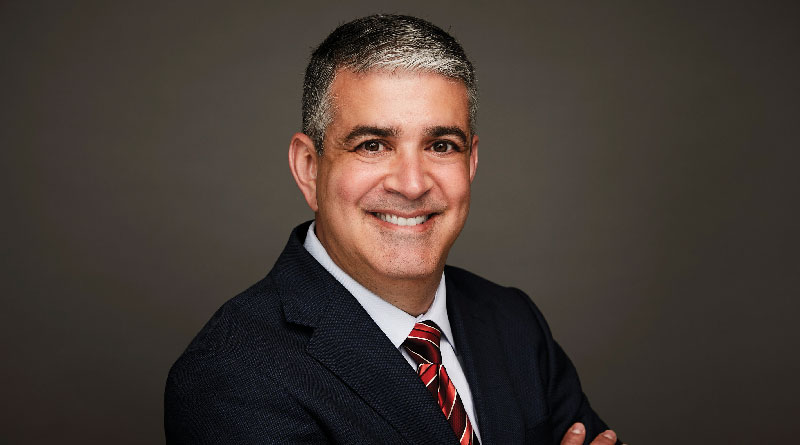Right-Sized Innovation: Making ARDA’s Industry Vision Work for Any Resort
When ARDA released its latest “Navigating the Future of Timeshare” report, it painted an exciting picture. Partnerships, technology, enhanced owner experiences – the opportunities are inspiring. But turning these insights into reality? That’s where vision meets real-world complexity. Every resort needs its own path forward, one that fits its unique market, ideal guests, operational complexities, and available resources.
Success isn’t about chasing every trend in the report to check those boxes. It’s about identifying the opportunities that align with your resort’s strengths and what your guests actually want – then figuring out realistic ways to make them happen.
Across the industry, resorts are creating innovative programs that prove you don’t need massive budgets or complex systems to drive real results. It is possible for independent or small group resorts of any size to find ways to make takeaways from this report actionable.

Strategic Partnerships: Creating Value Through Local Connections
Skift’s research is clear – people place high value on experiences. Travel + Leisure is showing the industry they know how to build epic partnerships – from Margaritaville to ESPN. That’s because they are a worldwide brand, so their partnerships are also worldwide-level names. Don’t get discouraged that just because you can’t get a huge name, doesn’t mean there’s not an opportunity to create beneficial, strategic partnerships.
There’s opportunities for small, independent resorts to global brands to lean into the power of partnerships.
Royal Dunes Resort in Hilton Head brings this concept to life through their Unlimited Sports Package. By partnering with local businesses, they give their owners and guests access to unlimited golf, tennis, and pickleball during their stay at an affordable price. The value sells itself, making it less of an upsell and more of a benefit that generates additional revenue while being easy to promote.
The power of “unlimited” here is its clarity of value. Guests who don’t play golf, tennis, or pickleball feel good about not paying for included amenities they won’t use. Meanwhile, guests planning even one round of golf quickly see the value of unlimited access for roughly the same price. While “unlimited” offerings aren’t always possible, this example shows how the right structure can create clear value propositions that benefit both the resort and its guests. As Gordon Gurnik, senior executive vice president and chief operating officer at Hilton Grand Vacations (HGV), explains, “Members need to see that what we offer has a higher perceived value than the actual cost. Scale and partnerships are key to achieving this.”
What makes partnerships like these effective? A few key factors:
- They deliver genuine value that aligns with both guest interests and local culture
- They can be implemented efficiently, supporting both resort operations and local businesses
- They integrate seamlessly into the resort experience while respecting community resources
- They create authentic stories that naturally generate awareness and appreciation for the destination
- They build sustainable relationships that benefit both the resort and local community
The Lodge at Woodloch in Pennsylvania exemplifies a variety of unique approaches to partnership development. As a wellness-focused resort and spa, they offer their take on traditional activities such as spa treatments, but also offer unique things that a wellness-conscious customer would be interested in such as an expansive calendar of Speakers and Events, an art gallery rotating artists seasonally and an eclectic, but perfect for their ideal customer range of other offerings made possible by curated, strategic partnerships.
Fogo Island Inn in Newfoundland, Canada is a three Michelin Key resort that also leverages partnerships with local chefs, artisans, and cultural experts to create immersive guest experiences deeply rooted in Newfoundland tradition. According to Zita Cobb, Founder and CEO of Shorefast, the inn’s parent company, cultivating local partnerships isn’t just smart business – it’s what travel is supposed to be to respect and prioritize the destination and people if tourism to locations are to remain sustainable. In a September 2024 Skift article, How to Fix Travel? The Founder of this Michelin-Rated Inn Has Ideas, Cobb states that “We’ve lost track a little bit of the social and cultural part of the promise of travel which is why it all went wrong.”
While the specifics vary, the underlying principle remains consistent: seek out partners that authentically reflect your brand ethos and can be seamlessly integrated into your operation and take a genuine look at the local culture and resources to create partnerships that are sustainable to your business, the customer and the local community.

Finding Your Perfect Partners: The Social Media Advantage
Looking for potential partners doesn’t have to mean endless cold calls or waiting for someone to walk through your door. Social media offers a window into your local business community – and shows you who’s already connecting with your ideal guests.
Start with simple searches on Instagram and Facebook using location-based hashtags like #HiltonHeadRestaurants or #AspenAdventures. Look for accounts that are:
- Actively posting and engaging with their audience
- Creating professional, appealing content
- Responding to customer comments and messages
- Showcasing experiences that align with your values
- Demonstrating connection to local culture and community
Pinterest and Google Business profiles can reveal hidden gems too. Search terms like “best local experiences in [your area]” or “[location] unique activities” often surface businesses already creating authentic experiences that could resonate with your guests.
Have specific ideas in mind? Search for those too. Looking for someone to lead morning beach yoga? Try “Daytona Beach yoga teachers.” Want a local artist to design limited edition resort merchandise? Search #seattleartists.
Why social media makes sense for finding partners:
- You can see their work quality firsthand
- Active social presence suggests business stability
- Their content style indicates if they’ll be good marketing partners
- You can assess guest feedback through comments and reviews
- Their follower engagement shows if they connect with your target audience
- You can evaluate their commitment to community and sustainability
Ready to reach out? It’s as easy as just asking!
Direct messages work surprisingly well for starting these conversations, but don’t waste time with vague pleasantries. Keep it professional yet personable. Don’t copy and paste a generic outreach to a bunch of businesses. You can use a template, but just as a framework to ensure you got all the information for concise outreach.
Example outreach framework:
“Hi [Name], I am [your role] with [Resort].
Your [specific experience/offering] would be perfect for our guests, and we love how you [specific observation about what you like]. Would you be interested in discussing a potential collaboration?
The best partnerships often start with simple, direct outreach that respects everyone’s time while clearly stating the shared opportunity.

Making Partnerships Work Harder: The Power of Promotion
Creating these experiences is only half the equation. The best partnerships and programs can’t drive value if potential guests don’t know about them. The Lodge at Woodloch makes their wellness partnerships a cornerstone of their marketing, showcasing them across digital channels. Their homepage video masterfully captures these unique experiences, showing potential guests exactly what makes their partnerships special. Fogo Island Inn’s social media tells the stories of their local artisans and culinary experts, turning their cultural immersion into compelling content that helps travelers picture themselves there.
Making these partnerships visible – through your website, social channels, and guest communications – transforms them from nice-to-have amenities into genuine booking drivers.
Smart promotion of your partnerships should:
- Feature prominently on your website’s key booking pages
- Create engaging social media content that highlights the experience
- Share partner activities in pre-arrival communications with full details. Make costs, reservation requirements, and other important information clear upfront – transparency in upselling builds trust and drives participation
- Gather and share guest testimonials about these experiences
- Use visual content to help potential guests imagine themselves there

Building Community Through Thoughtful Engagement
The timeshare industry is getting younger. ARDA’s new owner report shows the average recent buyer is just 39 years old, with Gen Z and Millennials now making up 57% of all owners. These younger owners aren’t just looking for a place to stay – they want to be part of a tribe, connected to a community that shares their values and vacation style.
The report reveals how this desire for community is reshaping the industry. “There’s a resurgence in country clubs because people value the social and communal aspects,” Lori Gustafson, chief membership and commercial services officer at Marriott Vacations Worldwide notes. “The same goes for timeshare, where the social experience is crucial. This club-like feeling creates community moments that are hard to quantify during a sales pitch but are significant for guests. It offers more than a transient vacation rental or hotel stay — it fosters connections and ownership, creating natural opportunities to connect with others from different places.”
Digital spaces can strengthen these connections between visits, but don’t try to control the conversation. These channels work best when they’re authentic – a place for real feedback and genuine connections that let your community grow naturally.
What makes community-building efforts successful:
- Create organic opportunities for guest connections
- Foster both in-person and digital spaces for community
- Let conversations and relationships develop naturally
- Share stories that highlight genuine community moments
- Focus on shared experiences and values
- Encourage connections across generations and backgrounds
- Remember that community can’t be forced – it needs to be nurtured

Technology That Makes Sense
“While AI is often marketed as a solution to every problem,” the report cautions, “the reality is that meaningful AI-enabled solutions require well-correlated data.” Translation? Don’t chase technology just because it’s there. Focus on tools that actually solve problems for your guests and staff while being realistic to implement. Investing in AI tools when you either don’t have a CRM or your data is a mess? That’s setting yourself up for failure.
Some resorts are creating impressive tech experiences. The Shashi Hotel in Mountain View, California caters to its Silicon Valley clientele with their “Living Room in a Box” experience – letting guests personalize room settings and display personal photos on their in-room TV. Vail Resorts’ EpicMix app uses RFID technology to track ski statistics, show real-time lift line waits, and offer interactive trail maps.
You don’t need fancy tech to make an impact. Start with the basics that actually matter to guests. Can they book and manage their reservations online? Can they easily communicate with your staff once they’re on property? These fundamental improvements often drive more value than flashy features.
The key is asking the right questions. First, how can we improve guests’ ability to help themselves – while still keeping the option for personal service? If your reservation system already works well, then start exploring unique ways technology could enhance the guest experience. But always start with what your guests actually need, not what looks impressive in a press release.
What makes technology investments successful:
- Focus on solving real guest problems, not chasing trendy features
- Ensure you have the data and systems to support new tech
- Start with fundamental guest needs (booking, communication)
- Balance self-service options with personal assistance
- Build on existing systems that work well
- Invest in tech that your staff can actually support and maintain
- Consider guest adoption likelihood before implementation
Flexible Options for Modern Travelers
The report hits this point home – “for younger travelers who may not be ready for traditional vacation ownership… rentals and trial memberships are attractive options.” With the average new owner now 39 years old, flexibility isn’t just nice to have – it’s essential.
For this new generation of timeshare owners, flexibility is key. But what if you’re a fixed-week property? When your resort structure doesn’t naturally foster flexibility, you have to look past the hurdles to find opportunities.
One of the biggest opportunities often gets overlooked: exchange partners. Exchanging adds flexibility to fixed week ownership, yet many first-time timeshare buyers find the process confusing. Simple improvements like clearly communicating how exchanging works and offering hands-on assistance with exchange programs can showcase these options to potential buyers.
You can’t force someone to use exchange options, but you can make sure they understand them. Too often, resorts miss opportunities to properly demonstrate the value exchanging adds to ownership. Take it one step further and don’t just show what exchanging is, get stories from your actual owners on where they traveled via exchange. Real stories of owners exploring Italy or skiing Colorado resonate far more than theoretical explanations of how exchanging works.
Keys to making flexibility work when your structure is inflexible:
- Clearly communicate exchange options and processes
- Provide hands-on assistance with exchanges
- Share real owner travel stories instead of theoretical examples
- Focus on practical solutions within your existing structure
- Help potential buyers visualize the full range of possibilities
- Use actual guest experiences in your marketing
Moving Forward with Purpose
The report paints an exciting picture of the industry’s future. But success isn’t about implementing every trend – it’s about choosing the right opportunities for your specific situation. When evaluating where to focus your efforts, consider:
- Does this align with what makes your property unique?
- Will it resonate with your target guests?
- Can your team execute it consistently and well?
- Does it build on existing strengths?
- Are the operational demands realistic?
- Does it take your local community culture and impact into consideration?

As Jason Gamel concludes in the report, “Our future will be shaped by the industry’s ability to adapt to these trends while staying true to its core value: delivering exceptional, memorable vacation experiences.”
The resorts finding success with these innovations share this mindset – they choose initiatives that authentically align with their identity, solve real guest needs, and can be executed excellently with available resources.
The result? Programs and experiences that enhance the owner experience while driving sustainable growth – exactly what the report envisions for the industry’s future.
Kelley Ellert is the owner of Waterwheel Marketing, a marketing consultancy that develops and implements marketing solutions for hospitality businesses of all sizes. Find her on LinkedIn @kelley-ellert or at WaterwheelMarketing.com.



